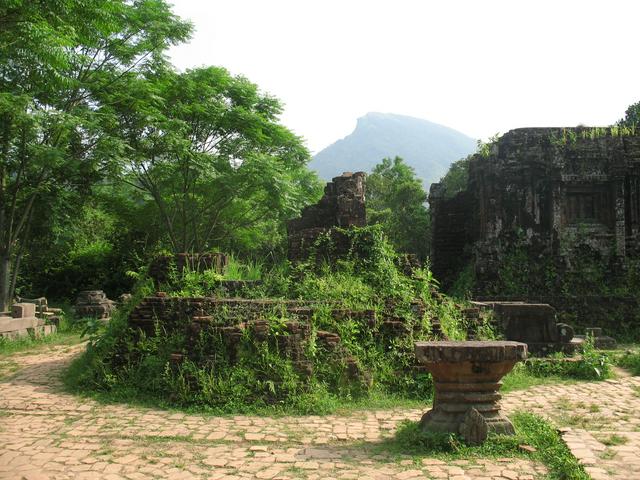 My Son (Vietnamese: Mỹ Sơn) is a set of ruins from the ancient Cham Empire in the central coast of Vietnam. It is a UNESCO World Heritage Site.
My Son (Vietnamese: Mỹ Sơn) is a set of ruins from the ancient Cham Empire in the central coast of Vietnam. It is a UNESCO World Heritage Site.
My Son was built by the Champas who ruled Central Vietnam from c.200-c.1700 CE until annexed by the Vietnamese in the 19th century. Influenced by Hinduism, the Champas built temple complexes in Central Vietnam. The best-known and preserved temple still in daily use by Buddhists is the Po Nagar Cham Tower in Nha Trang. The temples of My Son were the most important temples of the Champa Kingdom. Bricks were used to build the temples, without mortar, and sculptures of gods, priests, animals, and scenes of mythical battles and devotion adorned the walls. These temples were places of worship of Lord Vishnu.
After the fall of the Champa, the jungle began to reclaim the area. The temples had already fallen into disrepair by the 1960s, when the Viet Cong used My Son as a base. An act of the U.S. Congress prohibited bombing of My Son during the war, but nevertheless the site suffered devastating bombing raids by the United States Air Force
My Son was designated a UNESCO World Heritage Site in 1999. There are travel guides that compare My Son with Angkor, Bagan and Borobudur. Historically, they have a point: in their time, these complexes were leading spiritual centres, and they have all fallen into a state of ruin. However, the ruins at My Son are far less impressive than any of the other sites, for various reasons: the smaller scale of the original site, for example, the comparatively poor upkeep and the severe damage to the buildings from time and war. Even so, this is a unique and important historical site, and the gorgeous jungle scenery alone may be worth the trip.
The best time of the day to visit My Son is early in the morning or late in the afternoon when there are few tourists.
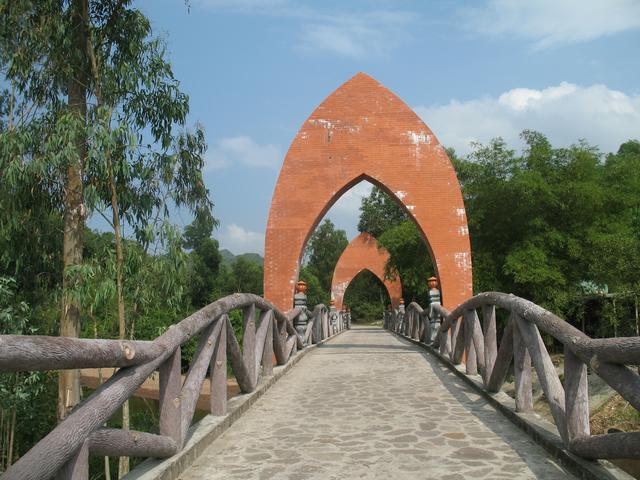
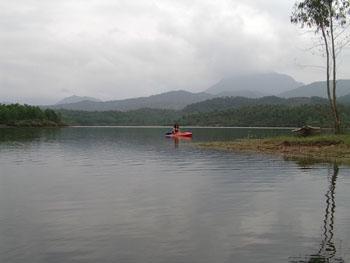
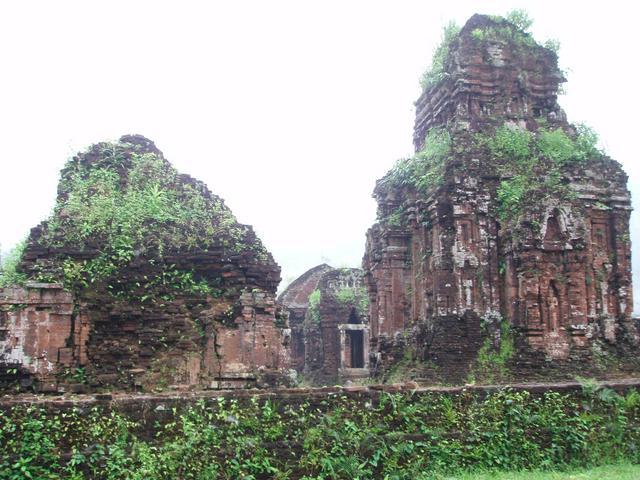
Near the ticket office there is a Champa Museum, describing many of the artifacts and the history of the site. The curators have made the odd (and maddening) decision to remove virtually all of the better-preserved sculptures from the ruins and display them here or at the small museum in Group A instead of in context with the temples where they belonged. Accordingly, try to visit the museum briefly before visiting the temples themselves. It closes a half-hour before everything else, so you might not be able to catch it on the way out.
The temples are in varying states of disrepair, with restoration still underway on some. There are nine "groups", labeled A-G. Effectively, there are three major sites: A, B-C-D, and E-F. The G, H and L ruins are separate and a little trickier to find. If you can't find them, don't spend all day trying; they're much smaller than the rest. All of the sites are connected by reasonably well-labelled walking tracks.
The layout of the temples is dictated by the rays of the sun and in the early morning this is clearly evident. The early morning sunlight shines behind the head of Lord Vishnu from where it is scattered throughout.
There are traditional dancing displays at 09:45 (daily except Mondays) for the benefit of tour groups. The stage is before you reach the first group of ruins, across from the souvenir shop.
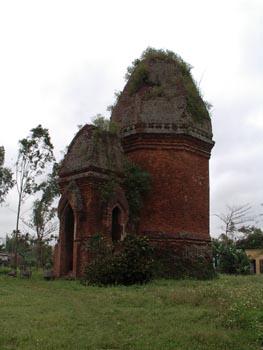
- If you enjoyed My Son and want to see a good example of a Champa Tower in the Hoi An area then go to the nearby village of Vinh Dinh and on the road north (alongside the Vu Gia river). You will find there a very well-preserved relic, the "Bang An Tower". This is hardly ever seen by tourists and is still in use by worshippers.
- Just past Tra Kieu heading towards My Son on the left is the small but excellent Sa Huynh Museum which includes some artefacts from Cham (free of charge). Building shape is more Cham than Vietnamese. Many of the artefacts were donated by a Catholic priest who lived in Tra Kieu.
- The streams running through My Son end up in a still lake about 3 km long which is ideal for kayaking. Hardly anyone knows about or uses this unspoiled gem. Karma Waters operates kayaking trips on My Son Lake.
There is a souvenir shop within the site. It sells generic Vietnam souvenirs and also a selection of items influenced by Champa culture.
Numerous roadside cafes and restaurants line the road from Hoi An to My Son. Tour buses never stop at them because drivers, guides, and tour operators do not earn "commissions" at these places.
The first open-air restaurant on the left coming into My Son is owned by a local family. Mr Duong has lived in My Son since 1995, when My Son village was created by the Vietnamese Government and funded by Italy in anticipation of UNESCO WHS status. Duong provides good food, drinks, rest (hammocks), and parking. Prices a little high but reasonable for My Son.
Next door to Duong and about 100 m away from the My Son entrance is the Ganesa Restaurant, which sounds Indian but is a Vietnamese restaurant. Check out the high prices and low quality. Note some tour companies like Camel Open Tour, Anh Phu and others stop at this restaurant.
Don't wander too far from the clearly-marked walking tracks between the sites. Although authorities say that the area has been cleared of unexploded ordnance, you're a long way from help in case of an accident.
